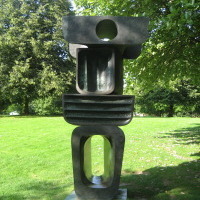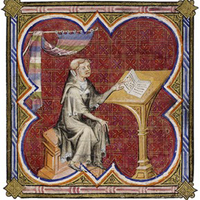Books by Bryan White

This book explores the exchange of music, musicians and musical practice between Britain and the... more This book explores the exchange of music, musicians and musical practice between Britain and the Continent in the period c.1500-1800. Inspired by Peter Holman's research and performing activities, the essays in the volume developthe theme of exchange and dialogue through the lenses of people, practices and repertory and consider the myriad ways in which musical culture participated in the dynamic relationship between Europe and Britain. Key areas addressed are music and travel; music publishing; émigré musicians; performing practice; dissemination of music and musical practice; and instruments. Holman's work has revealed the mechanisms by which continental practices were adapted to local circumstances and has helped to show that Britain enjoyed a vigorous musical culture in the long eighteenth century, in which native proponents produced original works of quality and interest and did not simply copy continental models. Following avenues opened up by Holman' scholarship, contributors to this volume explore a variety of ways in which the cross-fertilization of music and musicians has enriched European, and especially British, culture of the early modern period.
Introduction - John Cunningham and Bryan White
'Qui en ont porté la connoissance dans les autres Royaumes': The Transmission of Music for Viols by Emigrant Composers in Seventeenth-Century England - Patxi del Amo
'The Tunes of the usual French Dances at COURT and DANCING SCHOOLS': The Repertoire and Musical Practice of Dancing Masters in Restoration England - Andrew Woolley
'An Inexhaustible Treasure of Harmony'? Composition and Variation in William Babell's Twenty-four Solos - Alan Howard
The Fashion for Corelli in Eighteenth-Century England - Min-Jung Kang
'After the Italian manner': Finger, Pepusch and the First Concertos in England - Robert G Rawson
Geminiani's Minuets in Britain and on the Continent - Rudolf Rasch
Battles and Bransles: The Role of the Swiss Pair in Early Modern Courtly Society - Nancy Hadden
Lost in Translation?: Louis Grabu and John Dryden's Albion and Albanius - Bryan White
The Figuring of Bass Parts in German Dance Music from the Second Half of the Seventeenth Century; What it Tells us About their Performance - Michael Robertson
Harmonic Language and Playing Style of English 'Continued Bass' in the Seventeenth Century - Thérèse de Goede
Melodic Aspects of the Cadential Six-Four in Eighteenth-Century Music - Michael Talbot
'Before him stood sundry sweet Singers of this our Israel': The Chorus Singers for Handel's London Oratorio Performances - Donald Burrows
'Seven Young Hautboys': The Impact of German Hautboisten on English Musical Life, 1680-1800 - Samantha Owens
British Concert Repertoire and its Dispersal in Europe: Sets of Parts in the Utile Dulci Library, Stockholm - Fiona Smith
Angelo Notari and the English Court - Johnathan Wainwright
The Elusive Identity of John Playford - Robert Thompson
James Sherard as Music Collector - Stephen Rose
New Light on William Corbett's Gresham College Bequest - John Cunningham
Philip Hayes and the Preservation and Dissemination of Purcell's Music in Eighteenth-Century England - Rebecca Herissone
Rameau and the English - Graham Sadler
Stephen Storace as a Disciple of Mozart - Julian Rushton
Working with Peter Holman: From a Seat in The Parley of Instruments - Judy Tarling
Peter Holman: A Family Memoir - Tricia Holman
The Works of Peter Holman
Index

In 1683 English court musicians and the Musical Society of London joined forces to initiate annua... more In 1683 English court musicians and the Musical Society of London joined forces to initiate annual observations of St Cecilia's Day (22 November), celebrating the occasion with a feast and the performance of specially composed music. The works written for these celebrations were musical odes, a form appropriated from the English court where it served as royal panegyric. For this new celebration, poets replaced praise of the monarch with praise of Cecilia and music, and court musicians used the event as an opportunity to present in a semi-public arena a musical form hitherto restricted to court circles. The most prominent composers and poets of the age wrote for these occasions, including Henry Purcell, John Blow, John Dryden and William Congreve. The musical odes were lavishly scored, and the best musicians of the city, primarily drawn from the court music, undertook the performances. The stewards for the celebrations, chosen from the ranks of the Musical Society, included persons from differing social, political and religious backgrounds, demonstrating that the event was largely non-political and supported by a diverse range of wealthy London society. After a decade of celebrations, a church service was added before the feast, at which a sermon defending the use of concerted music in worship was preached, and elaborate vocal and instrumental music was performed. At the same time celebrations of St Cecilia's Day began to spread widely throughout the British Isles, where they were held by local music clubs, often with the support of cathedral musicians. Though the annual London celebrations came to an end after 1700 in the face of increasing competition from the city’s busy musical and theatrical offerings, Cecilian poetry continued to inspire new musical settings in the eighteenth century, including works by Pepusch, Greene, Boyce and, most notably, Handel.
This book examines the social, cultural and religious significance of celebrations of St Cecilia's Day in the British Isles, and explores the music and poetry that originated from them. The annual feasts of the Musical Society are analysed in detail, as is the role they played in the development of the ode from a form of royal panegyric designed for a specific occasion into a concert form without an occasional function. The book considers how advances in musical culture in London were imitated in the provinces, and provides a detailed discussion of the variety of Cecilian celebrations held at provincial centres throughout the British Isles.
Book chapters by Bryan White

Music Exchange Between Britain and Europe 1500-1800, ed. John Cunningham and Bryan White (Boydell Press), 2020
Louis Grabu’s setting of John Dryden’s Albion and Albanius is an unprecedented and unimitated exp... more Louis Grabu’s setting of John Dryden’s Albion and Albanius is an unprecedented and unimitated experiment in English musical drama. Grabu returned to London from France to compose ‘something at least like an opera’ when Thomas Betterton failed to import the real thing – a full-blown French opera – on his trip to Paris in 1683. Grabu’s debt to the French operas of Lully has long been acknowledged, and his setting of English text frequently criticised. However, the difficulty he faced in setting Dryden’s text as an opera has been too little acknowledged. The libretto did not conform to any clear precedents in English musical theatre, much less the librettos by Quinault and his contemporaries, which would have formed the template for Grabu’s conception of opera. This chapter will analyze Grabu’s attempt to the write music using the style, form and aesthetic of Lullian opera to an English text constructed on an unfamiliar dramaturgical design. A close examination of the Act II accompanied dialogue between Albion and Albanius will illustrate the successes, failures and frustrations of this difficult and exceptional experiment.
World Soul A History, ed. James Wilberding, 2021
By the beginning of the seventeenth century speculative music, the branch of musical thought the ... more By the beginning of the seventeenth century speculative music, the branch of musical thought the origins of which can be traced back to Pythagorean and Platonic concepts of the ordering of the cosmos through the proportions of musical intervals and of the music of the spheres, had diverged completely from practical musical performance and composition. Thomas Morley, in his ...

From Republic to Restoration: Legacies and Departures, ed. Janet Clare (Manchester University Press), 2018
Despite experiments in the 1650s – especially The Siege of Rhodes – through-sung opera failed to ... more Despite experiments in the 1650s – especially The Siege of Rhodes – through-sung opera failed to gain a firm foothold in Restoration England. Explanations for this circumstance have focussed on English taste, the finances of London’s theatre companies, and the popularity of native ‘dramatick opera’. While these were significant obstacles to the progress of through-sung opera in England, they do not explain why Thomas Betterton and the United Company ventured a rumoured £4000 on the production of Dryden’s and Grabu’s Albion and Albanius (1685). The lack of royal patronage has been overlooked as a barrier to the development of opera in England. Charles II displayed an ambivalent attitude to through-sung opera (English or otherwise) throughout his reign. His reticence to provide direct financial support was the most significant factor in the failure of the art form to find a significant place in English culture of the Restoration period.

Beyond Boundaries: Rethinking Music Circulation in Early Modern England, ed Autstern, Bailey and Eubanks Winkler (Indiana University Press)
Explorations of English musical culture in the Restoration period have tended to focus on a rathe... more Explorations of English musical culture in the Restoration period have tended to focus on a rather narrow set of socio-economic groups. Understandably, composers and musicians have received the greatest attention; these are followed by members of the court, the aristocracy and gentry, and university-educated professionals, who have been seen as the most important employers, patrons, consumers and commentators in the musical culture of the period. However, at least one other group appears to have played an increasingly significant role in musical society during this time, those who may be described as merchants and businessmen. These people, who were not usually university-educated, worked in overseas trade, banking, and a range of wholesale and retail activities, and their increasing wealth was, amongst other social diversions, spent on music: lessons, publications, concerts and patronage. Musicians and publishers worked to meet the needs of this growing constituency by offering increasing numbers of concerts and musical prints that catered to their tastes. Using diaries, account books, personal letters, wills and inventories, this essay will re-locate the musical activity of London to show the significant impact that merchants and other men of business had on the city’s burgeoning musical life.

A group of letters, song indexes and a collection of music from the Ferrar Papers held in the lib... more A group of letters, song indexes and a collection of music from the Ferrar Papers held in the library of Magdalene College, Cambridge provide evidence of a provincial music club operating in the last decade of the seventeenth century in and around Stamford in Lincolnshire. The letters, to and from the three Ferrar brothers, Thomas, Basil and Edward, reveal two types of music making: domestic music making, primarily of vocal music, undertaken by the brothers and their friends, and music making through an organized club with articles and subscriptions, the members of which are referred to as ‘Cecilians’, engaging primarily in instrumental music. The club took a particular interest in Corelli, and discussion of his music appears in several of the letters. The club obtained his Op. 3 as early as March of 1694, and through contact with a wealthy London merchant, were introduced to Op. 4 no later than August 1697. The letters also refer to music for ‘The Witch of Endor’, and suggest an attempt by the club to commission a Cecilian ode. A set of song indexes in the hand of Thomas Ferrar indicates that he had performance parts to H. Purcell’s ode ‘Celestial Music’. It may be that this work was performed by the Stamford music club, perhaps as their Cecilian ode. Unlike other early provincial music societies, which tended to develop in cathedral cities where a musical establishment, including trained singers, organists and composers, supported the activities of the society, Stamford’s music club appears to have consisted almost entirely of amateur musicians from the middle classes. Stamford’s position on the Great North road probably aided the club’s ability to get music, since with improved coach travel, it was only a little over two days journey from London. Furthermore, Stamford’s music club is symptomatic of a larger trend of increased sociable activity in England. Social historians have identified this as an aspect of England’s urban renaissance, which had its beginnings in the period covered by the Ferrar’s letters.

Although Louis Grabu’s opera Albion and Albanius has been recognized by scholars as a work that i... more Although Louis Grabu’s opera Albion and Albanius has been recognized by scholars as a work that influenced Henry Purcell and his dramatic operas, the nature and extent of this influence has not been explored in detail. Purcell appears to have studied Grabu’s opera with some discrimination as part of his own syllabus for improving English music: ‘learning Italian, which is its best Master, and studying a little bit of the French Air, to give it somewhat more of Gayety and Fashion.’ His contact with Albion and Albanius led him to emulate the luxuriousness of its publication in his own Dioclesian (published 1691), and to develop and improve upon several musical techniques found in Grabu’s French-style opera. These include the use of concerto-effects contrasting different groups of instruments, the structure of a series of large-scale chaconnes and passacaglias, and the enlargement of choral movements through the addition of instrumental passages between vocal entries. Thomas Betterton, producer of Albion and Albanius and of Purcell’s dramatic opera may also have been important in ensuring the influence of the former on the latter, by pointing Purcell towards exemplars of successful musical and scenic combinations in Albion and Albanius.
Articles by Bryan White

Music & Letters, 2021
This article investigates occasional anthems written for the Chapel Royal by Henry Purcell, John ... more This article investigates occasional anthems written for the Chapel Royal by Henry Purcell, John Blow, and William Turner in an attempt to understand the political work enacted through their texts and settings. The anthem’s place in the liturgy and its relationship to the sermon is considered, along with the ways in which anthem texts were selected, compiled, and adapted from source texts. Though occasional anthems usually served to interpret current events favourably for the regime, during the crisis caused by James II’s prosecution of the Seven Bishops Blow set texts that can be interpreted as challenging the king’s pro-Catholic policies. The article concludes by considering the extent to which the characteristics of an anthem text can be used to speculate on the occasion for which it was selected when that occasion is unknown, using the example of Purcell’s My song shall be alway.

Music & Letters, 2011
In the summer of 1688, Rowland Sherman—a factor for the Levant Company in the service of Sir Gabr... more In the summer of 1688, Rowland Sherman—a factor for the Levant Company in the service of Sir Gabriel Roberts—left London for Aleppo, in modern-day Syria, where he lived and worked until his death in 1748. Two letter-books of his correspondence for the years 1683–91 and 1699–1702 survive; they include letters to musical friends in London—primarily to the Levant merchant Philip Wheak and the Blackwell Hall factor James Piggott—containing many references to Henry Purcell, a personal acquaintance of Sherman and his circle. Through his friends, Sherman sent greetings to the composer, from whom he requested compositions and rules for basso continuo playing. The letters also provide information on Wheak’s travels in Italy c.1687–8, where he collected music by Bernardo Pasquini and Girolamo Frescobaldi, which he sent to Sherman and also took back to Purcell and his other acquaintances in London; this group of amateur and professional musicians was associated with the Society of Gentlemen Lovers of Music, patrons of the yearly musical celebrations at Stationers’ Hall in London on St Cecilia’s Day. In addition, Sherman’s letters describe his musical activities in Aleppo, which included performing with his English compatriots, other European merchants, and clerics from the local Catholic mission. An inventory of Sherman’s estate made after his death, including a detailed catalogue of his musical library of 123 prints and manuscripts, shows his musical interests and the range of his collecting activities. A detailed examination of Sherman’s letters and music library, of his circle, and of his life in Aleppo offers a new understanding of music-making among merchants and professional musicians in Restoration London, and shows how music provided a crucial medium for entertainment, friendship, and personal recreation among an isolated community of European merchants in the Ottoman Empire.

Early Music, 2009
Two letter books of Rowland Sherman, an English trading agent for the Levant Company in Aleppo, c... more Two letter books of Rowland Sherman, an English trading agent for the Levant Company in Aleppo, containing his correspondence with a number of amateur musicians in London, have been found to provide new evidence on the date of the performance of Henry Purcell’s Dido and Aeneas. Amongst Sherman’s letters is one to a James Piggott that specifically describes music from Purcell’s opera, and clearly links it with a performance at Priest’s school. The letter indicates that the opera was composed no later than July of 1688, the point at which Sherman left England for Aleppo. The letter describes the overture to the opera, and another movement that is probably the opening symphony to the Prologue. Sherman’s letter can be cross-referenced with correspondence between Edmund Verney in Buckinghamshire, whose daughter Mary attended Chelsea School, and his brother John in London, who visited Mary and saw her performances (including John Blow’s Venus and Adonis) at the school. These letters suggest the possibility of a performance of Dido in December 1687, while Thomas D’Urfey’s epilogue indicates a further performance in 1689. Sherman’s correspondence provides new information regarding Purcell’s acquaintance with London merchants, his activities as a teacher, and his practices of arranging theatre tunes for the keyboard. Sherman’s letter does not clarify whether or not Purcell composed Dido for performance at the royal court, but it does strongly suggest that, whatever the origins of the opera, the first performance took place at Priest’s school in Chelsea.

This article identifies the complete text for a seventeenth-century English Royal court ode that ... more This article identifies the complete text for a seventeenth-century English Royal court ode that has previously been known only in a fragmentary form. Entitled ‘The noise of foreign wars’, the musical setting is thought to be by Henry Purcell, but the lack of the complete ode in literary or musical form has made it impossible to determine the occasion for which it was written. The newly identified manuscript copy of the poem, held in the Beinicke Rare Book and Manuscript Library at Yale University, indicates that it was written to celebrate the birth on 24 July 1689 of William, Duke of Gloucester. While the copy of the poetic text does not mention Purcell as composer, the details it provides of the venue for the ode’s performance (Hampton Court) and the time frame in which that performance probably took place (late July/early August) fit snugly with the established facts of Purcell’s activities at this time. In particular, it provides a likely explanation (i.e. pressure of time because of the unanticipated requirement to provide a royal ode) for Purcell’s recycling of music from an earlier work in the otherwise newly composed ode ‘Celestial Music’ performed at Mr Maidwell’s School on 5 August 1689.
Louis Grabu’s opera Albion and Albanius (1685), to a libretto by John Dryden, was influenced grea... more Louis Grabu’s opera Albion and Albanius (1685), to a libretto by John Dryden, was influenced greatly by the operas of Lully from which he borrowed models for individual movements and passages of music. Both Grabu and the theatre impresario Thomas Betterton seem to have been familiar with Phaëton (1683), for elements of its music, libretto and scenic design, the latter by Jean Berain, can be discerned readily in Albion and Albanius. Models from Bellerophon (1679) and Amadis (1684) are also evident. There is some reason to believe that Grabu was also influenced by a passage from Purcell’s Dido and Aeneas.
Early Music Performer, 2007
This PDF includes several corrections to the published paper listed as errata on the first page o... more This PDF includes several corrections to the published paper listed as errata on the first page of the PDF.
Reports and short articles by Bryan White
Early Music Performer, Issue 21, 2007
A discussion of Clarke's music focussing on the keyboard music and the odes. The discussion of th... more A discussion of Clarke's music focussing on the keyboard music and the odes. The discussion of the keyboard music draws attention to variant versions of some of the pieces, and in particular a widely disseminated Ground in C major. Includes a transcription of the Ground together with a transcription of two pieces associated with it found in an early source.
Select Editions by Bryan White
Two editions of anthems by John Blow for the Web Library of Seventeenth-Century Music
A critical edition of G.B. Draghi's setting of John Dryden 'A Song for St Cecilia's Day, 1687'
A critical edition of Louis Grabu's opera 'Albion and Albanius' (1685) setting a libretto by John... more A critical edition of Louis Grabu's opera 'Albion and Albanius' (1685) setting a libretto by John Dryden.










Uploads
Books by Bryan White
Introduction - John Cunningham and Bryan White
'Qui en ont porté la connoissance dans les autres Royaumes': The Transmission of Music for Viols by Emigrant Composers in Seventeenth-Century England - Patxi del Amo
'The Tunes of the usual French Dances at COURT and DANCING SCHOOLS': The Repertoire and Musical Practice of Dancing Masters in Restoration England - Andrew Woolley
'An Inexhaustible Treasure of Harmony'? Composition and Variation in William Babell's Twenty-four Solos - Alan Howard
The Fashion for Corelli in Eighteenth-Century England - Min-Jung Kang
'After the Italian manner': Finger, Pepusch and the First Concertos in England - Robert G Rawson
Geminiani's Minuets in Britain and on the Continent - Rudolf Rasch
Battles and Bransles: The Role of the Swiss Pair in Early Modern Courtly Society - Nancy Hadden
Lost in Translation?: Louis Grabu and John Dryden's Albion and Albanius - Bryan White
The Figuring of Bass Parts in German Dance Music from the Second Half of the Seventeenth Century; What it Tells us About their Performance - Michael Robertson
Harmonic Language and Playing Style of English 'Continued Bass' in the Seventeenth Century - Thérèse de Goede
Melodic Aspects of the Cadential Six-Four in Eighteenth-Century Music - Michael Talbot
'Before him stood sundry sweet Singers of this our Israel': The Chorus Singers for Handel's London Oratorio Performances - Donald Burrows
'Seven Young Hautboys': The Impact of German Hautboisten on English Musical Life, 1680-1800 - Samantha Owens
British Concert Repertoire and its Dispersal in Europe: Sets of Parts in the Utile Dulci Library, Stockholm - Fiona Smith
Angelo Notari and the English Court - Johnathan Wainwright
The Elusive Identity of John Playford - Robert Thompson
James Sherard as Music Collector - Stephen Rose
New Light on William Corbett's Gresham College Bequest - John Cunningham
Philip Hayes and the Preservation and Dissemination of Purcell's Music in Eighteenth-Century England - Rebecca Herissone
Rameau and the English - Graham Sadler
Stephen Storace as a Disciple of Mozart - Julian Rushton
Working with Peter Holman: From a Seat in The Parley of Instruments - Judy Tarling
Peter Holman: A Family Memoir - Tricia Holman
The Works of Peter Holman
Index
This book examines the social, cultural and religious significance of celebrations of St Cecilia's Day in the British Isles, and explores the music and poetry that originated from them. The annual feasts of the Musical Society are analysed in detail, as is the role they played in the development of the ode from a form of royal panegyric designed for a specific occasion into a concert form without an occasional function. The book considers how advances in musical culture in London were imitated in the provinces, and provides a detailed discussion of the variety of Cecilian celebrations held at provincial centres throughout the British Isles.
Book chapters by Bryan White
Articles by Bryan White
Reports and short articles by Bryan White
Select Editions by Bryan White
Introduction - John Cunningham and Bryan White
'Qui en ont porté la connoissance dans les autres Royaumes': The Transmission of Music for Viols by Emigrant Composers in Seventeenth-Century England - Patxi del Amo
'The Tunes of the usual French Dances at COURT and DANCING SCHOOLS': The Repertoire and Musical Practice of Dancing Masters in Restoration England - Andrew Woolley
'An Inexhaustible Treasure of Harmony'? Composition and Variation in William Babell's Twenty-four Solos - Alan Howard
The Fashion for Corelli in Eighteenth-Century England - Min-Jung Kang
'After the Italian manner': Finger, Pepusch and the First Concertos in England - Robert G Rawson
Geminiani's Minuets in Britain and on the Continent - Rudolf Rasch
Battles and Bransles: The Role of the Swiss Pair in Early Modern Courtly Society - Nancy Hadden
Lost in Translation?: Louis Grabu and John Dryden's Albion and Albanius - Bryan White
The Figuring of Bass Parts in German Dance Music from the Second Half of the Seventeenth Century; What it Tells us About their Performance - Michael Robertson
Harmonic Language and Playing Style of English 'Continued Bass' in the Seventeenth Century - Thérèse de Goede
Melodic Aspects of the Cadential Six-Four in Eighteenth-Century Music - Michael Talbot
'Before him stood sundry sweet Singers of this our Israel': The Chorus Singers for Handel's London Oratorio Performances - Donald Burrows
'Seven Young Hautboys': The Impact of German Hautboisten on English Musical Life, 1680-1800 - Samantha Owens
British Concert Repertoire and its Dispersal in Europe: Sets of Parts in the Utile Dulci Library, Stockholm - Fiona Smith
Angelo Notari and the English Court - Johnathan Wainwright
The Elusive Identity of John Playford - Robert Thompson
James Sherard as Music Collector - Stephen Rose
New Light on William Corbett's Gresham College Bequest - John Cunningham
Philip Hayes and the Preservation and Dissemination of Purcell's Music in Eighteenth-Century England - Rebecca Herissone
Rameau and the English - Graham Sadler
Stephen Storace as a Disciple of Mozart - Julian Rushton
Working with Peter Holman: From a Seat in The Parley of Instruments - Judy Tarling
Peter Holman: A Family Memoir - Tricia Holman
The Works of Peter Holman
Index
This book examines the social, cultural and religious significance of celebrations of St Cecilia's Day in the British Isles, and explores the music and poetry that originated from them. The annual feasts of the Musical Society are analysed in detail, as is the role they played in the development of the ode from a form of royal panegyric designed for a specific occasion into a concert form without an occasional function. The book considers how advances in musical culture in London were imitated in the provinces, and provides a detailed discussion of the variety of Cecilian celebrations held at provincial centres throughout the British Isles.